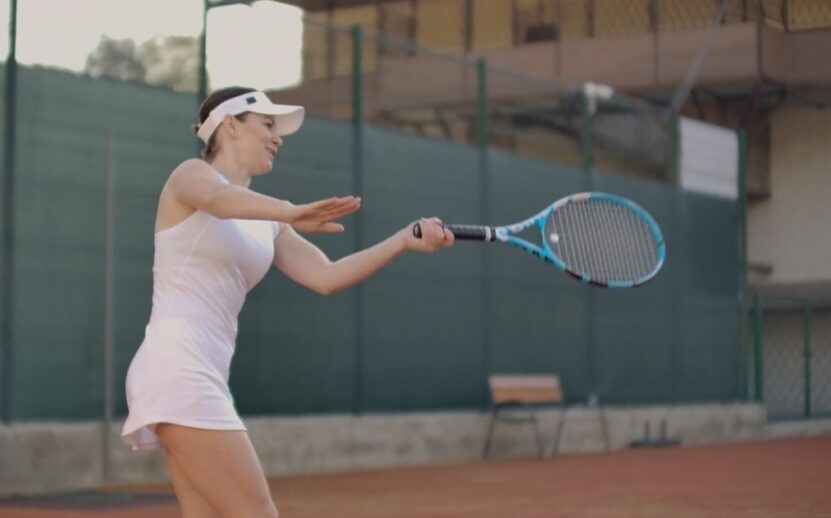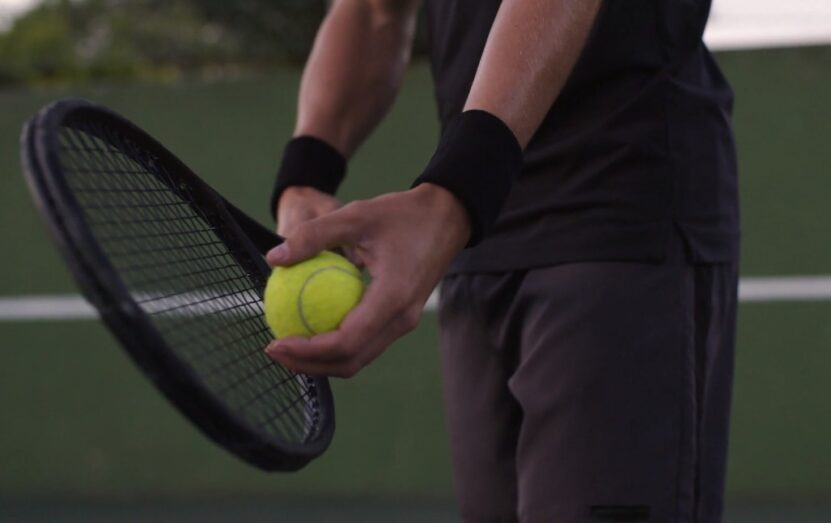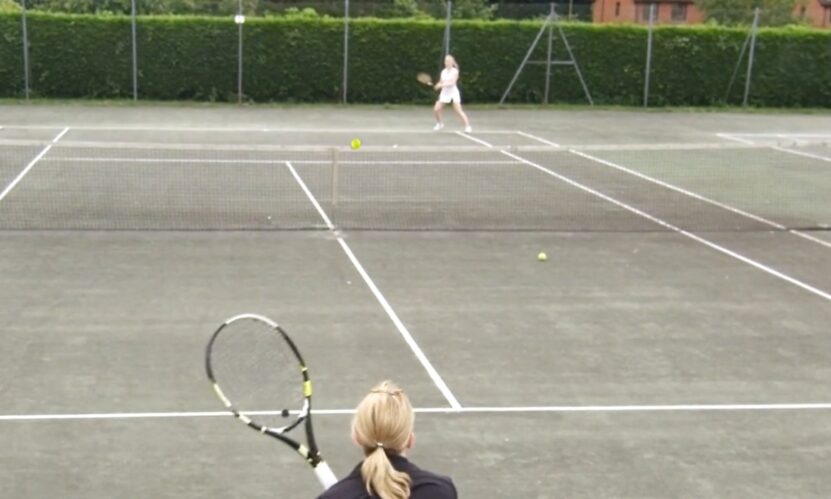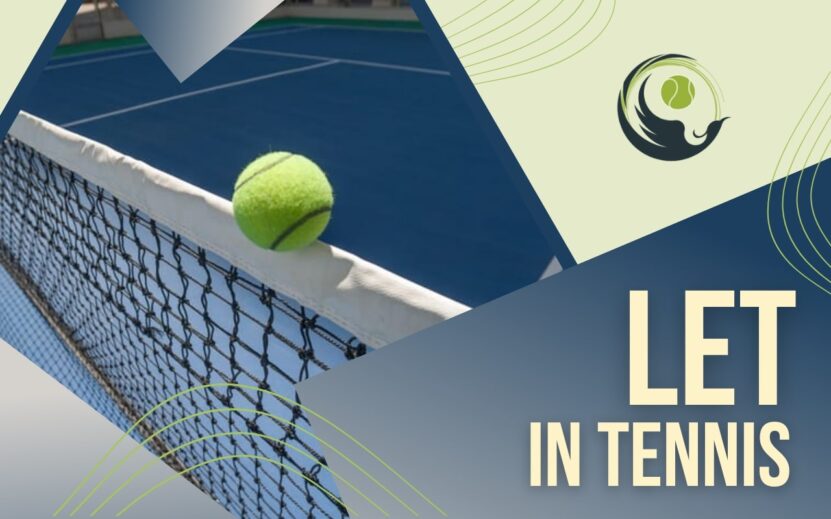Tennis is an exciting and dynamic sport enjoyed by millions of people around the world. It is a game that requires skill, strategy, and physical fitness. One of the key aspects of tennis is the serve, which can often be the most challenging part of the game. In this article, we will explore one of the rules of tennis that can sometimes be confusing for players and fans alike – the let.
Understanding the Basics: What is a Let in Tennis?
A let in tennis is a situation that occurs during a serve when the ball hits the net and lands in the correct service box. When this happens, the serve is not counted, and the player must re-serve that ball. This rule applies to both first and second serves.
Why Do Lets Occur?
Lets occur due to a variety of reasons. Sometimes, the player may not hit the ball with enough power, causing it to hit the net. Other times, the ball may hit the net cord and roll over into the correct service box, resulting in a let.
Additionally, if a ball from another court comes onto the court during a serve, it is considered a let, and the serve must be replayed.
What Happens if the Ball Hits the Net and Goes Out?
If the ball hits the net during a serve and goes out of bounds, it is not considered a let. Instead, it is a fault, and the player loses that serve.
How Do You Determine a Let?
The decision on whether or not a let has occurred is made by the chair umpire. If the chair umpire determines that this is the case, the server is given another opportunity to serve that ball. If the chair umpire determines that a let has not occurred, the player loses that serve.
Can It Occur During a Rally?
During a rally, the ball is in play, and players are trying to hit it over the net and into their opponent’s court. If the ball hits the net and lands on the opponent’s side, the point continues.
Similarly, if the ball hits the net and goes over to the server’s side, the point also continues. There is no replay or penalty given in either of these situations. Therefore, a let can only occur during a serve and not during a rally.

Can a Player Call a Let on Themselves?
It is common for players to call out when they hit a shot that they believe is out of bounds. Similarly, players can also call a let on themselves if they believe their serve hit the net and landed in the correct service box.
Calling a let on oneself is a display of sportsmanship and honesty on the court. It shows that the player is committed to playing by the rules and wants to ensure fair play. However, it is important to note that a player cannot call a let on themselves after their opponent has hit a return. Once the return has been hit, the point is in play, and the player cannot call a let on themselves.
What Happens if a Player Serves Before the Receiver Is Ready?
If a player serves before the receiver is ready, it is considered a fault, and the player loses that serve. However, if the receiver is not ready and makes an attempt to return the serve, a let may be called, and the serve can be replayed.
How Often Do Lets Occur in Tennis?

Lets are a common occurrence in tennis matches, especially at the professional level where serves are hit at high speeds. While the exact frequency of lets can vary from match to match, it is not uncommon for them to occur several times in a single game.
The frequency of lets can be influenced by various factors such as the speed and placement of the serve, the height of the net, and the playing conditions such as wind and weather. For example, on a windy day, it may be more difficult for players to serve accurately, increasing the likelihood of this happening.
How Many Times Can a Let Be Called During the Match?
In standard singles or doubles match, there is no limit to the number of lets that can be called. If a serve hits the net and lands in the correct service box, the point is replayed, regardless of how many times it happens. While it may be frustrating for the server to hit multiple lets, it is a necessary aspect of the game to ensure fair play.
In Grand Slam tournaments, the electronic let-calling system is used, which eliminates the need for a chair umpire to make these calls. However, if the electronic system malfunctions, the chair umpire can make a call, but there is a limit of three such calls per player per set.
In other professional tennis tournaments, such as ATP and WTA events, there is no specific limit to the number of lets that can be called. However, the chair umpire may use discretion in making the calls to prevent excessive delays in the match.

Famous Lets in the History of Tennis
Famous lets have occurred throughout the history of tennis, providing exciting and unforgettable moments in the sport. One of the most notable incidents occurred during the men’s singles final at the 1981 Wimbledon Championships between John McEnroe and Bjorn Borg.
In the fourth set tiebreak, McEnroe served for the set and hit a serve that appeared to hit the net before landing in the service box. However, the chair umpire, who was unsighted, called the serve out, much to McEnroe’s dismay. After a heated exchange with the umpire, McEnroe continued to play the match but ultimately lost the tiebreak and the match.
Another famous let incident took place during the 2004 US Open women’s singles quarterfinals between Serena Williams and Jennifer Capriati. With the score tied at 5-5 in the third set, Williams hit a serve that hit the net and bounced over to Capriati’s side of the court.
Capriati, believing that the serve was a let, stopped playing and waited for the chair umpire to make a call. However, the umpire did not call it, and Williams continued to play, eventually winning the point and the match.
In 1991, during the US Open men’s singles final between Stefan Edberg and Jim Courier, a let incident occurred that ultimately influenced the outcome of the match. In the fourth set, Edberg hit a serve that appeared to hit the net and land in the service box.
However, the chair umpire did not call the let, and Courier played the ball, hitting it into the net. Edberg went on to win the point and the game, and ultimately the match, in five sets.
These famous let incidents demonstrate the importance of understanding the let rule in tennis and the role of the chair umpire in making the call. While controversial let calls can lead to intense emotions and heated exchanges between players and officials, they also provide unforgettable moments in the history of the sport.
Frequently Asked Questions

1. Who decides whether a serve is a let in tennis?
The chair umpire is responsible for determining whether a serve is a let or not in tennis.
2. How is a let determined in tennis?
A let is determined in tennis when the ball hits the net and lands in the correct service box, and the chair umpire declares it as a let.
3. What happens after a let in tennis?
After a let in tennis, the server is given another opportunity to serve, and the point is replayed.
4. Can it be called for any other reason in tennis?
Yes, a let can be called in tennis for various reasons, such as a ball rolling onto the court or a player hindering the opponent’s ability to play a shot. However, the most common reason for it to happen is due to a serve hitting the net and landing in the correct service box.
Final Words
The let is a fundamental regulation in tennis that upholds impartiality and sportsmanship during play. It transpires when a serve strikes the net and lands within the appropriate service area, leading to a replay of the serve.
As with any guideline, having a clear understanding of the essentials of a let and the chair umpire’s role in deciding it can aid both players and spectators in gaining a better understanding of and enjoying the game of tennis.
We recently published an article about doubles tennis rules and tips, so make sure to check it out and stay updated on the topic.

